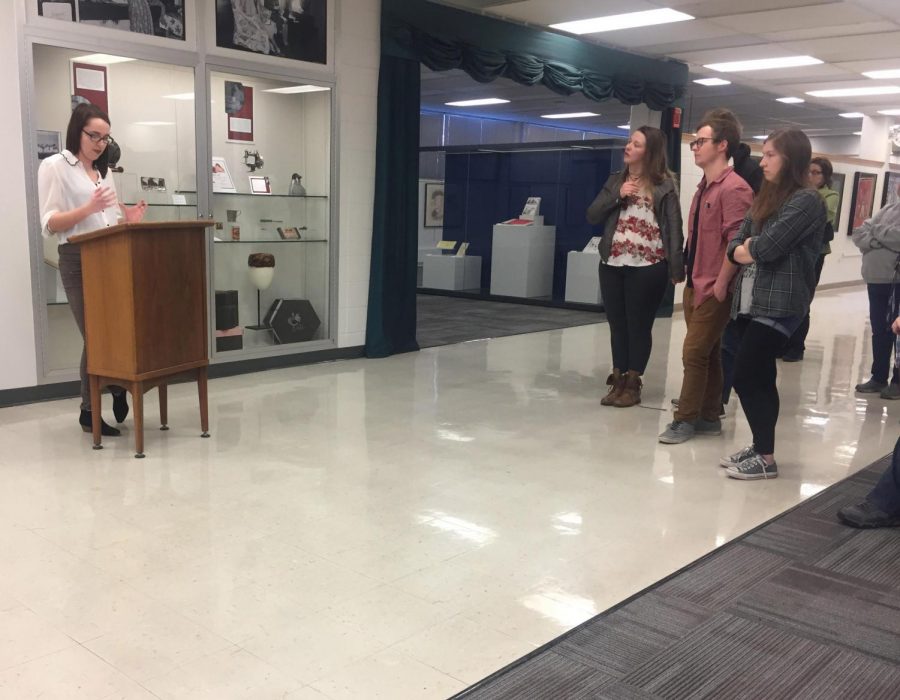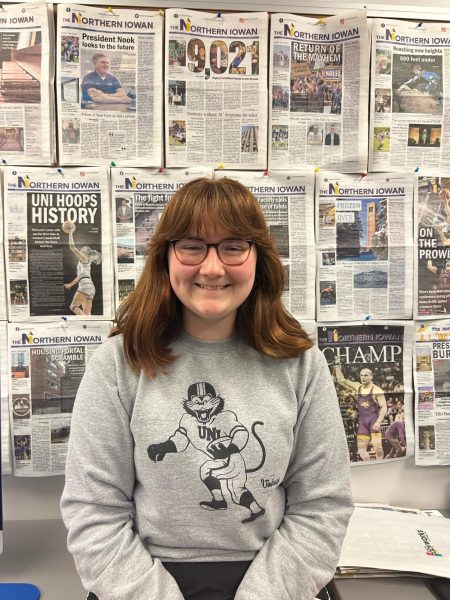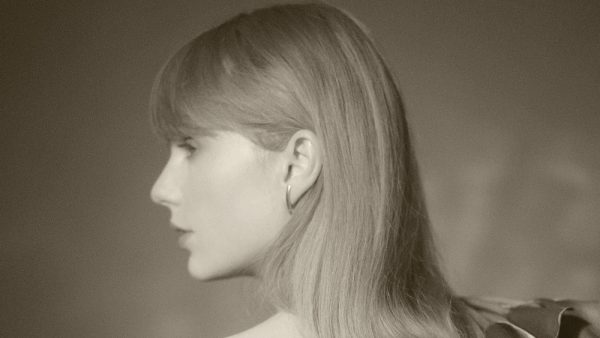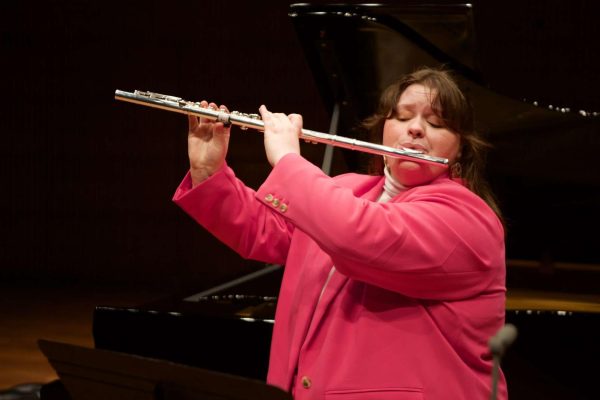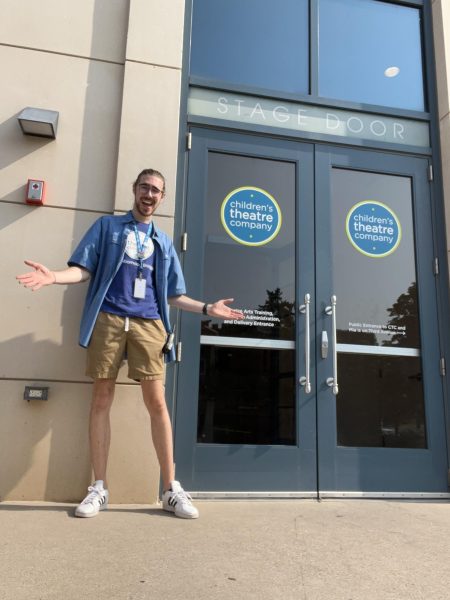‘Women in the Golden Age of Broadcasting’
The exhibit “Changing the Station: Women in the Golden Age of Broadcasting” opened in the UNI Museum on March 2.
Mar 5, 2018
Last Friday, March 2, students had an opportunity to witness the opening of the exhibit “Changing the Station: Women in the Golden Age of Radio,” in honor of Women’s History Month.
The UNI Museum, located on the bottom floor of Rod Library, hosted the exhibit, which featured a short talk with its curator, Ellie Akers.
“Women’s history needs to be heard and I think that this is one way that I am able help that and push that for young girls and help them empower themselves,” Akers said.
Akers, a senior anthropology major and head research student assistant at the UNI Museum, spoke about how Nathan Arndt, the museum’s assistant director and chief curator, presented her with the opportunity of curating the exhibit last summer.
This was when Akers helped Arndt put together the “Right Side Up: The Art and Life of Herb Hake” exhibit, which, according to the UNI Museum’s website, displayed the life of Herb Hake, a local cartoonist, television personality and historian.
Akers said she was new to the task of curating an exhibit. She knew her exhibit was supposed to coincide with the Hake project, which she said helped get her out of her comfort zone.
According to Akers, Arndt presented the idea of an exhibit based around women’s history and said it needed to be related to radio and radio broadcasting to match the theme established in the Hake project.
Akers said she began the process of developing the exhibit by researching the topic. She found there was a significant amount of information on women in the radio realm.
However, while there were many possible areas of focus available, Akers chose to start with the origins of the mediim and said that it was an excellent way to get people interested in the topic.
Furthermore, Akers said she was interested in what influenced American culture to be the way it is today. The specific subject of women and broadcasting helped her learn more about gender issues and how media is integrated in today’s culture.
“Before we had radio, before we had TV or social media — how did these people’s stories get heard?” Akers said. “There’s books about masses of people that accomplished things, and women weren’t talked about.”
Akers said she convinced Arndt that it would be beneficial for the exhibit opening to be held in March to complement Women’s History Month. She said it would be a great way to talk about women’s history at UNI in terms of radio production and radio broadcasting.
“There is something about it that just seems so empowering — as a female myself — that this is something that needs to be heard and is important enough that I wanted to make an exhibit about it,” Akers said.
The opening of the exhibit featured more information on women in broadcasting dating back to 1902. Akers also mentioned the Homemakers, a group of women who would talk into a transmitter about anything that came to mind.
According to Akers, there were other groups of people who made women politically active.
People can view the “Women in the Golden Age of Radio” exhibit now until August at the UNI Museum. The “Herb Hake” exhibit will be available to view until the end of July.

